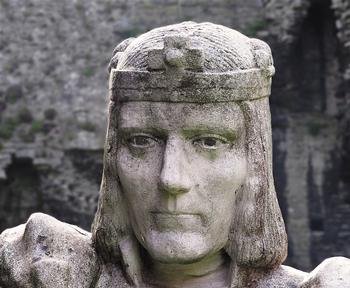Quiz Answer Key and Fun Facts
1. In which former palace was the future King John born in 1166?
2. King Henry II of England and Eleanor of Aquitaine were John's parents. Which French king was his mother's husband before King Henry II, who later complicated John's war with France on a personal level?
3. John was the youngest of the five sons. What was his nickname growing up, due to the expectation that he would never inherit any lands?
4. John became King Henry II's favourite son due to the rebellion of his brothers. Which of these is NOT one of Henry II's sons, who took part in this rebellion?
5. John was the first English King to hold what other country in his royal title?
6. Who was John's first wife?
7. King Richard I of England came to the throne in 1189. What title did he give John, mistakenly believing it would pacify him while Richard was away taking part in the Third Crusade?
8. Which one of these men did John manage to hound out of England in 1191?
9. When Richard was absent on crusade for some time before returning in 1194, what was John's reaction?
10. John was crowned in Westminster Abbey on what day?
11. What treaty did John sign alongside King Philip II of France in 1200?
12. John's second wife was Isabella of Angoulême. To whom was she originally betrothed?
13. A stain on the legacy of King John was his loss of Normandy. However, in what battle did John do particularly well, capturing 200 of Arthur's rebel leaders in 1202?
14. In 1203 Arthur of Brittany disappeared. The Margam Abbey Annals report that John killed him, and did what with his nephew's body?
15. In March 1204, which of these was the fort of John's that King Philip II captured, setting the stage for him to take Normandy?
16. Pope Innocent III and John had a dispute in 1205 over who should be the Archbishop of Canterbury. The Pope wanted Stephen Langton for the position. Who did John want?
17. The First Barons' War of 1215-1217 was a civil war in England against John. Who came to their aid from France?
18. Due to John's increasingly authoritarian behaviour, the Magna Carta was issued in 1215. Where was it first signed?
19. How did King John die?
20. Where is King John buried?
Source: Author
LuH77
This quiz was reviewed by FunTrivia editor
ponycargirl before going online.
Any errors found in FunTrivia content are routinely corrected through our feedback system.
